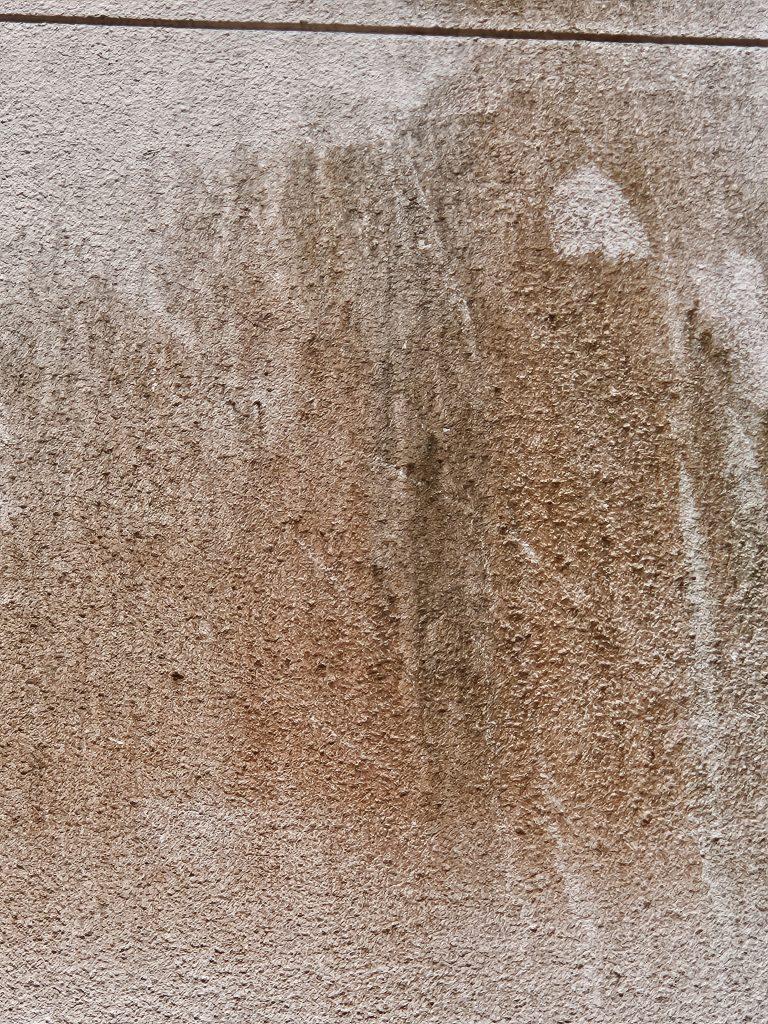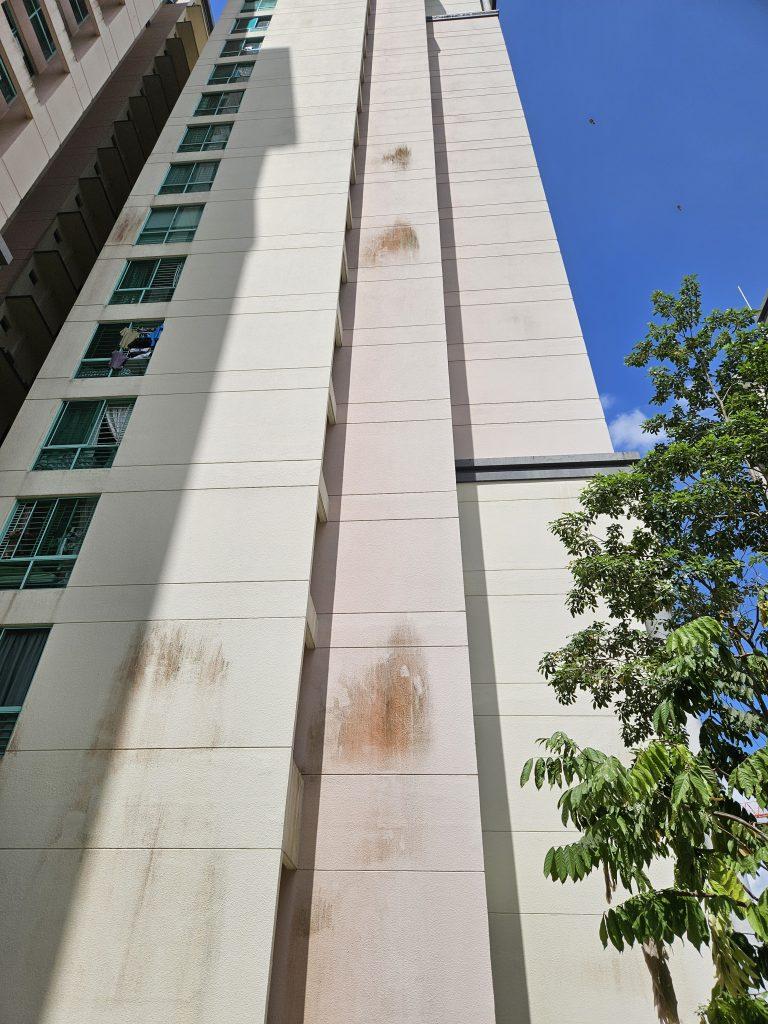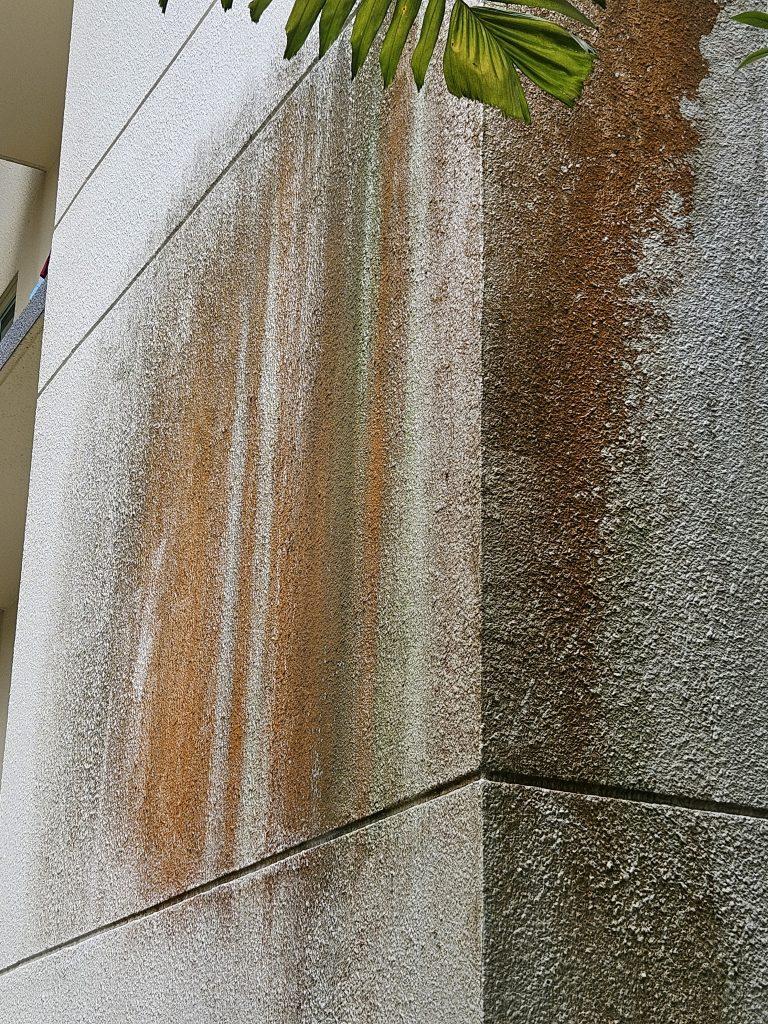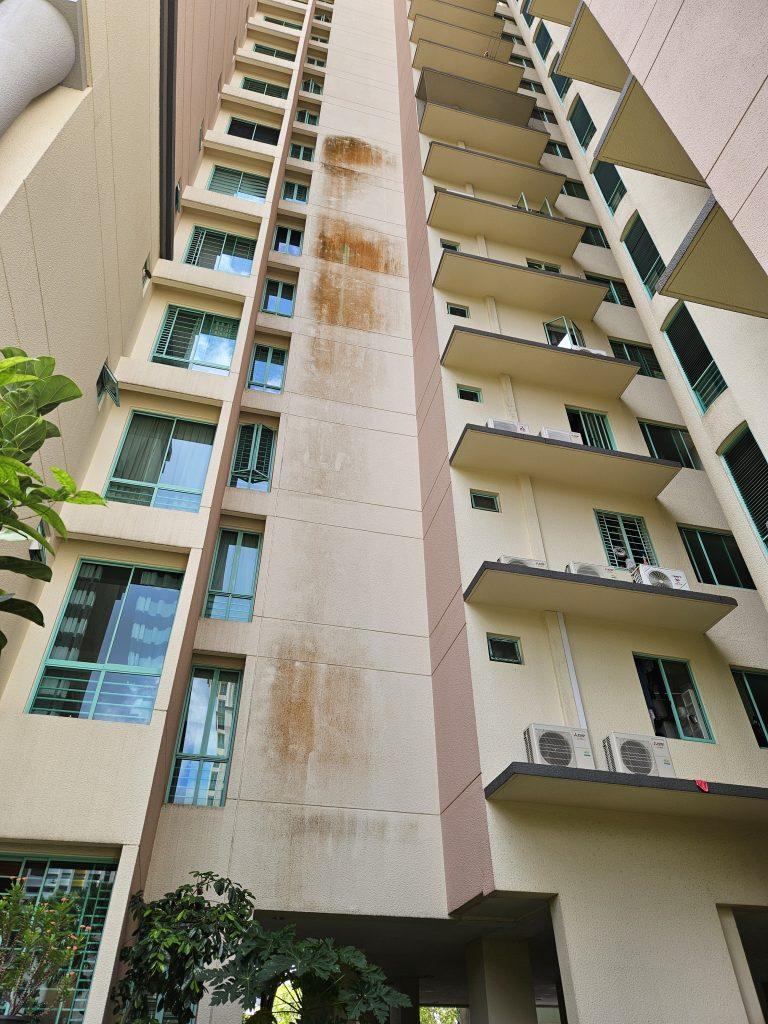Case 1
- Introduction
- Causes of Defects
- Good Practices
- Standards
- Maintenance and Diagnostics
- Remedial
- Similar Cases
- References




Introduction
Type of Building: Residential Flats
Biological attack such as algae, fungus & mould growth are common in the tropics [1]. Concrete surfaces that collect dirt and retain moisture allow the growth of plants and bacteria; these in turn retain more dirt and moisture and add to the shabby appearance [2].
Algae normally grow on walls or floors after their spores are transferred by wind to these surfaces. Fungi are parasitic in nature and usually attach themselves to damp surfaces which supply nutrients.
The abundance of organic matter from the vegetation and the relatively higher humidity level allows algae to proliferate and thrive on the walls where they are deposited. Algae growth is observed on the walls of all floors.
Algae are classed as aeroterrestrial as they spread through windborne spores and colonise in a biofilm on a surface, and when the conditions are susceptible, they will grow organically. They are photosynthetic and must have sunlight to continue growing. Although mostly green due to the presence of chlorophyll, black, blue, red, orange and yellow algae (depending on the number of other pigments within it) are found on all types of façade materials, including rendering, glass, aluminium and granite.
Algae thrive best where there is sun, moisture and nutrients. Dirt that is blown off the road and retained on façades becomes a source of nutrients. As such, algae are commonly found mainly outdoors on external façades. Common species of algae that may be found on façades are Trentepohlia odorata, Chlorococcum and algae comprising Scytonema, Schizothrix and Anacystics.

For more information on staining issue on facade, please visit “Staining of Facades“.